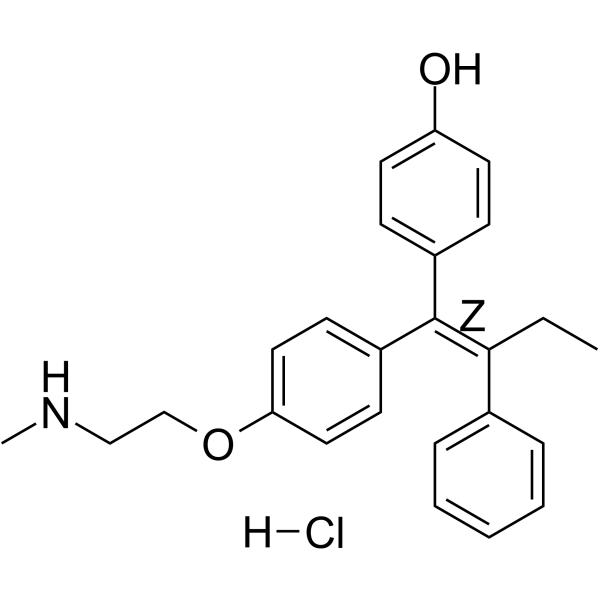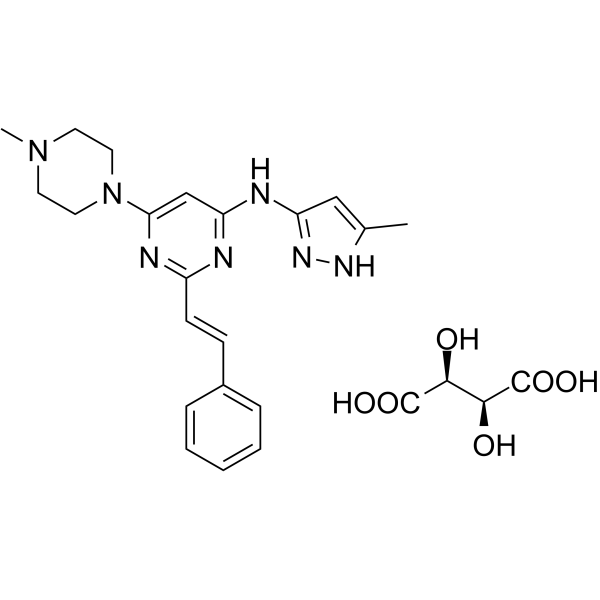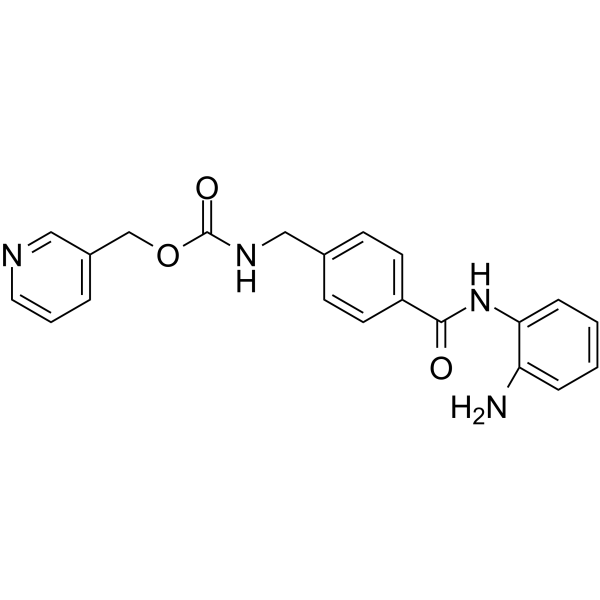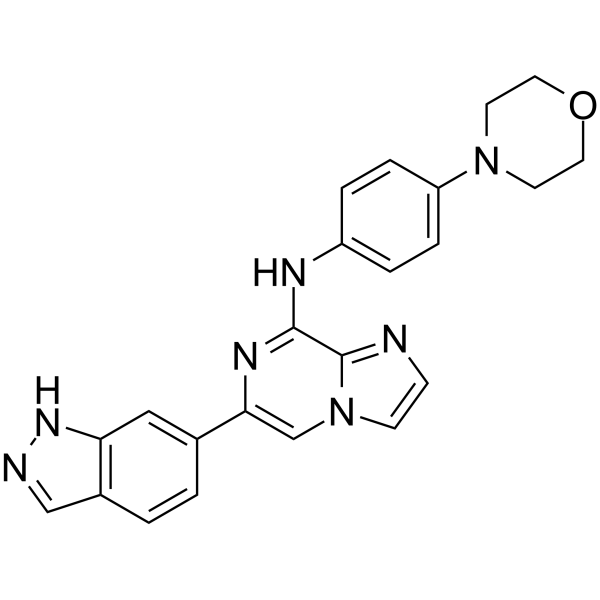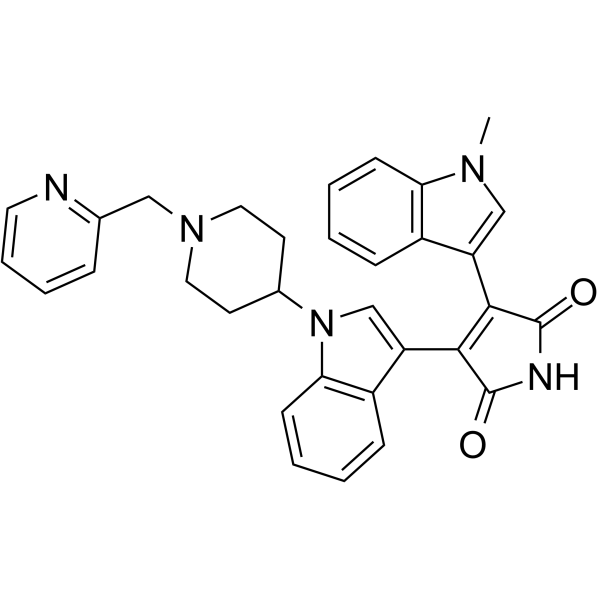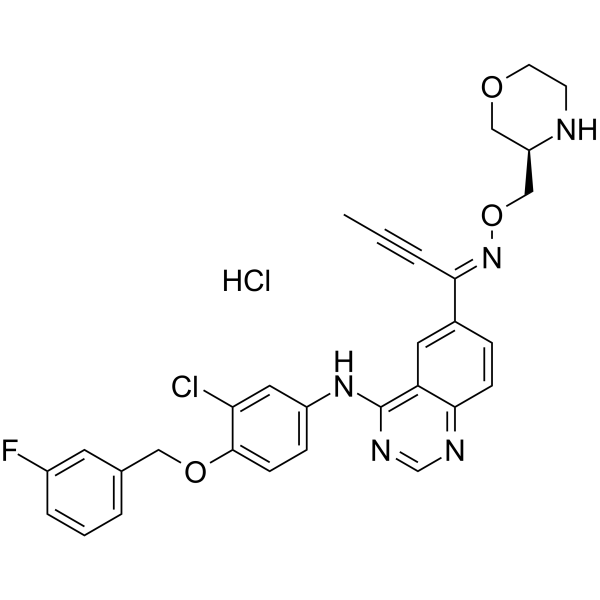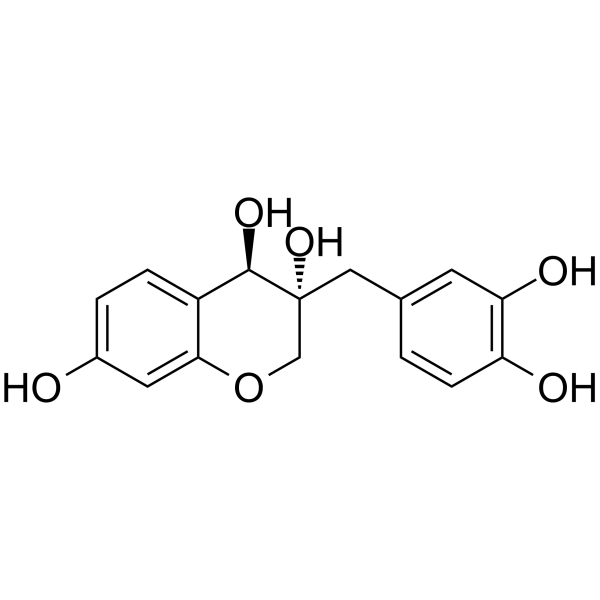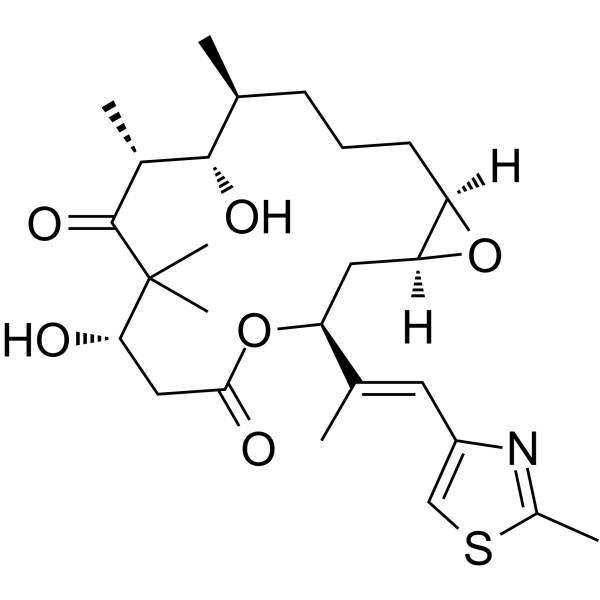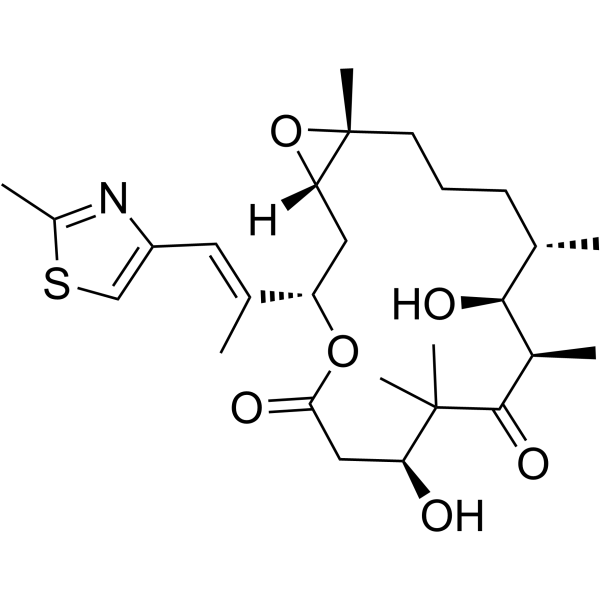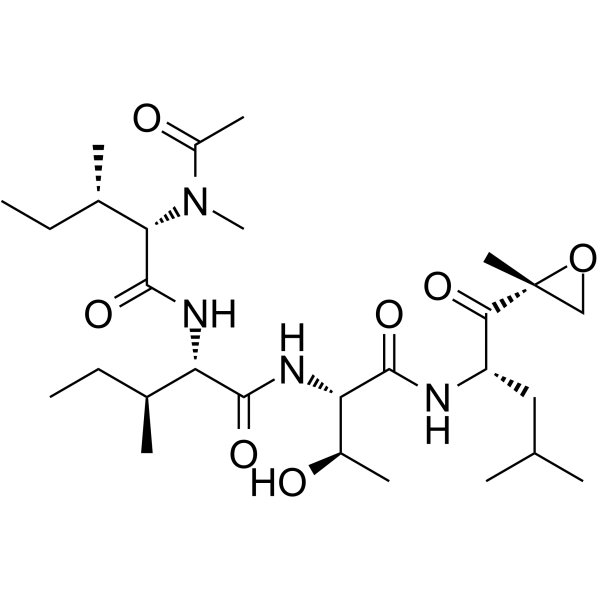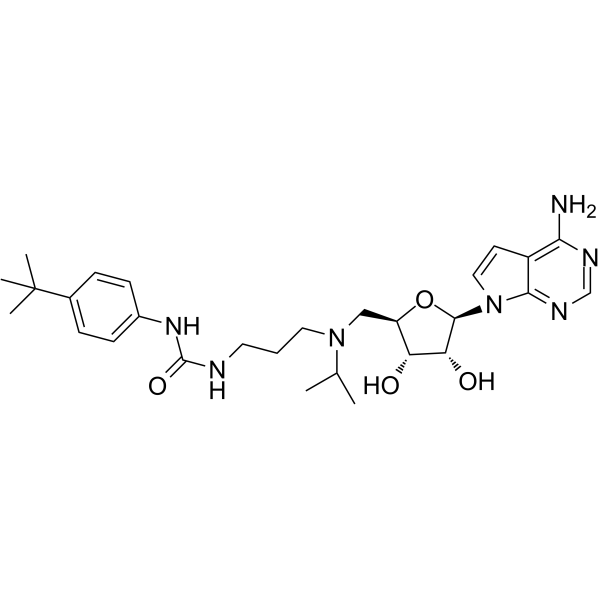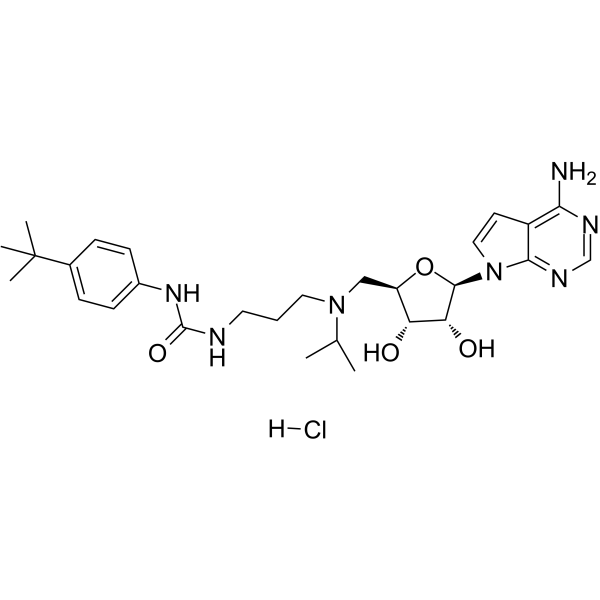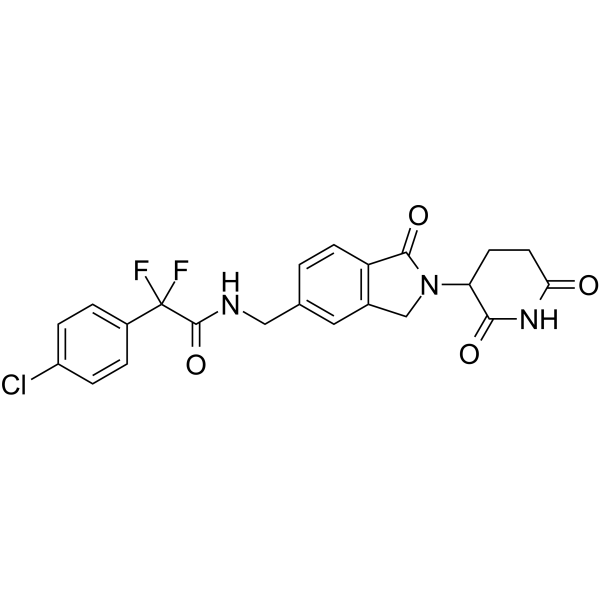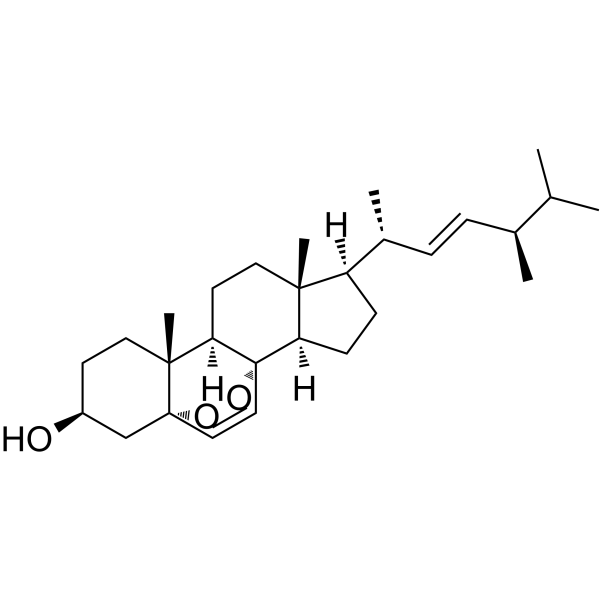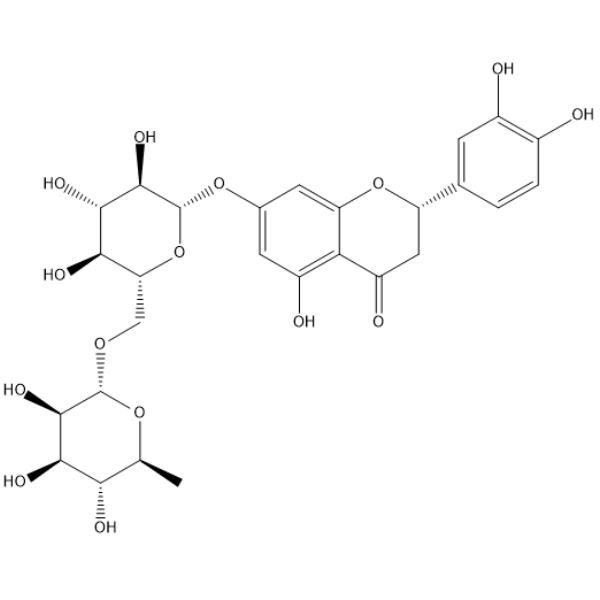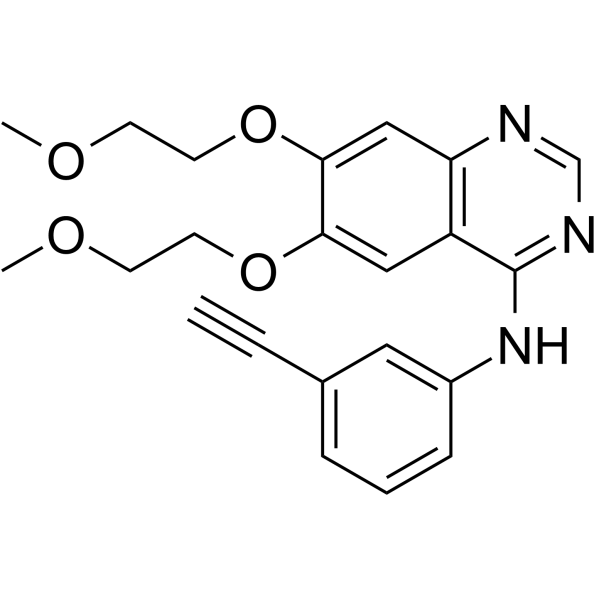|
BP10275
|
ELR510444
|
|
|
|
|
ELR510444 is a novel microtubule disruptor; inhibits MDA-MB-231 cell proliferation with IC50 of 30.9 nM; not a substrate for the P-glycoprotein drug transporter and retains activity in βIII-tubulin-overexpressing cell lines.
|
|
BP10647
|
Emamectin Benzoate
|
|
|
|
|
Emamectin Benzoate, by binding gamma-aminobutyric acid (GABA) receptor and glutamate-gated chloride channels disrupting nerve signals within arthropods, acts as a chloride channel activator.
|
|
BP10143
|
Endoxifen (Z-isomer)
|
|
|
|
|
Endoxifen (EDX) is a key active metabolite of tamoxifen (TAM) with higher affinity and specificity to estrogen receptors that also inhibits aromatase activity.
|
|
BP10049
|
Endoxifen Z-isomer hydrochloride
|
|
|
|
|
Endoxifen HCl is the active metabolite of Tamoxifen, which is an effective and selective estrogen receptor antagonist.
|
|
BP10342
|
ENMD-2076 Tartrate
|
|
|
|
|
ENMD-2076 L-(+)-Tartaric acid is the tartaric acid of ENMD-2076, selective activity against Aurora A and Flt3 with IC50 of 14 nM and 1.86 nM, 25-fold more selective for Aurora A than Aurora B and less potent to VEGFR2/KDR and VEGFR3, FGFR1 and FGFR2 and PDGFRα. Phase 2.
|
|
BP10982
|
Entinostat
|
|
|
|
|
Entinostat (MS-275) is an inhibitor of HDACs that inhibits HDAC1 and HDAC3 (IC50s: 0.18/0.74 μM).
|
|
BP10269
|
Entospletinib
|
|
|
|
|
Entospletinib (IC50= 7.7 nM)is a specific Syk inhibitor, which is orally bioavailable.
|
|
BP10743
|
Enzastaurin
|
|
|
|
|
Enzastaurin (LY317615) is an effective PKCβ selective inhibitor (IC50: 6 nM), 6- to 20-fold selectivity against PKCα/γ/ε.
|
|
BP10961
|
Epertinib hydrochloride
|
|
|
|
|
Epertinib hydrochloride shows potent antitumor activity. Epertinib hydrochloride is a potent, orally active, reversible, and selective tyrosine kinase inhibitor of EGFR, HER2 and HER4, with IC50s of 1.48 nM, 7.15 nM and 2.49 nM, respectively.
|
|
BP10873
|
Epieriocalyxin A
|
|
|
|
|
Epieriocalyxin A can suppress Caco-2 colon cancer cell growth. It could be a potential drug for colon cancer therapy in the future.
|
|
BP10137
|
Episappanol
|
|
|
|
|
Episappanol has anti-inflammatory activity , it can significantly inhibit the secretion of the pro-inflammatory cytokines interleukin (IL-6) and tumor necrosis factor-alpha (TNF-α).
|
|
BP10609
|
Epothilone A
|
|
|
|
|
Epothilone A is a microtubule-stabilizing agent with EC0.01 of 2 μM.
|
|
BP10610
|
Epothilone B
|
|
|
|
|
Epothilone B is a compound isolated from the myxobacterium Sorangium cellulosum. Similar to paclitaxel, patupilone induces microtubule polymerization and stabilizes microtubules against depolymerization conditions. In addition to promoting tubulin polymerization and stabilization of microtubules, this agent is cytotoxic for cells overexpressing P-glycoprotein, a characteristic that distinguishes it from the taxanes. Patupilone may cause complete cell-cycle arrest.
|
|
BP10396
|
Epoxomicin
|
|
|
|
|
Epoxomicin is a selective proteasome inhibitor with anti-inflammatory activity, inhibits primarily the CH-L activity of the 20S proteasome, while T-L and PGPH catalytic activities are also inhibited at 100- and 1000-fold reduced rate.
|
|
BP10389
|
EPZ004777
|
|
|
|
|
EPZ004777 is a potent, selective DOT1L inhibitor with IC50 of 0.4 nM.
|
|
BP10444
|
EPZ004777 hydrochloride
|
|
|
|
|
EPZ004777 hydrochloride is a potent, selective DOT1L inhibitor with IC50 of 0.4 nM.
|
|
BP10843
|
Eragidomide
|
|
|
|
|
Cereblon modulator 1 is a cereblon (CRBN) E3 ligase modulator. It specifically binds to CRBN, thereby affecting the activity of the ubiquitin E3 ligase complex.
|
|
BP10955
|
Ergosterol peroxide
|
|
|
|
|
Ergosterol peroxide is an inhibitor of osteoclast differentiation, which has antiviral, trypanocidal, antitumor, and antiangiogenic actions, it can stimulate Foxo3a activity by inhibiting pAKT and c-Myc and activating pro-apoptotic protein Puma and Bax to induce cancer cell death.Ergosterol peroxide can ameliorate TGF-β1-induced activation of kidney fibroblasts, it has the potential to be developed as a therapeutic agent to prevent renal fibrosis.
|
|
BP10399
|
Eriocitrin
|
|
|
|
|
Eriocitrin is powerful antioxidative flavonoid preventing oxidative damages caused by acute exercise-induced oxidative stress. It possesses lipid-lowering effects in a rat model of high-fat diet.
|
|
BP10828
|
Erlotinib
|
|
|
|
|
Erlotinib is an EGFR inhibitor (IC50: 2 nM). It is used for the treatment of non-small cell lung cancer.
|
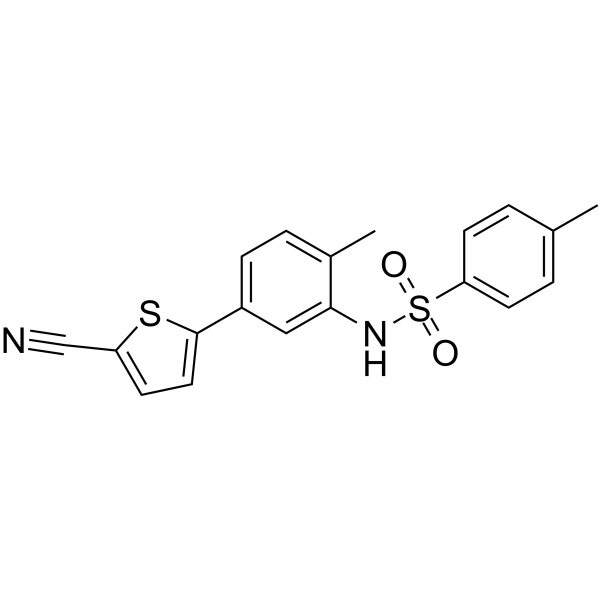
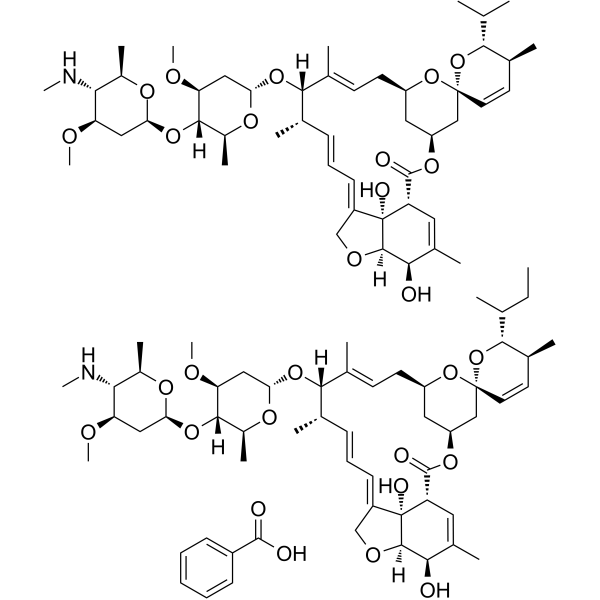
.gif)
